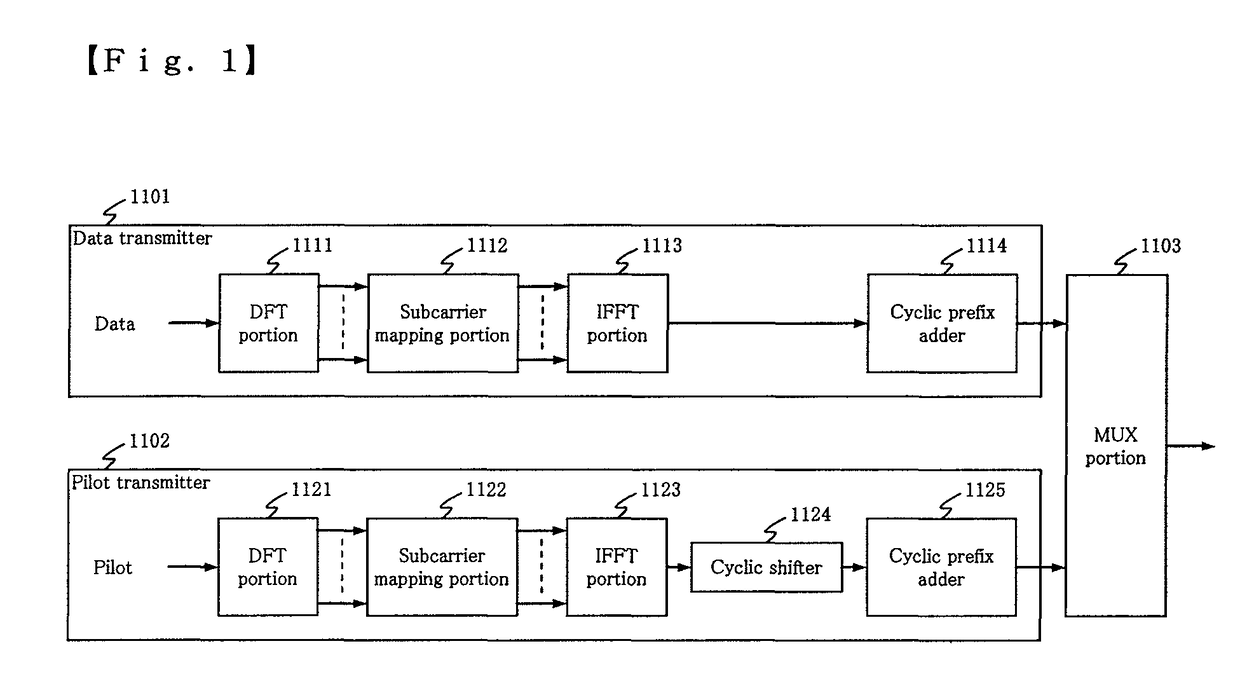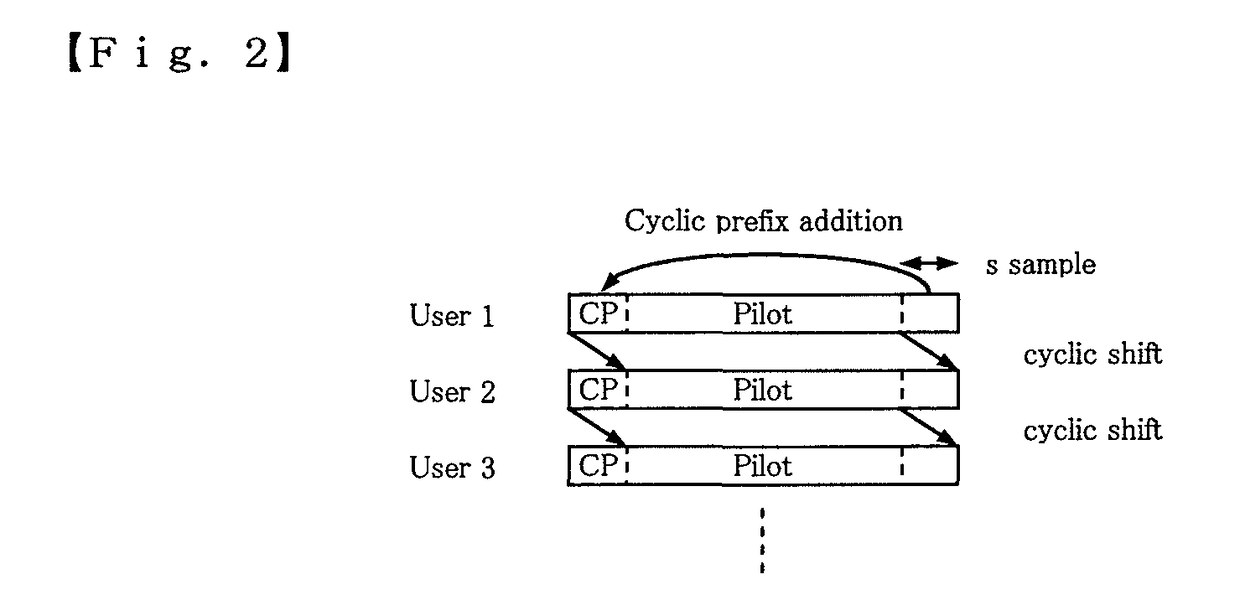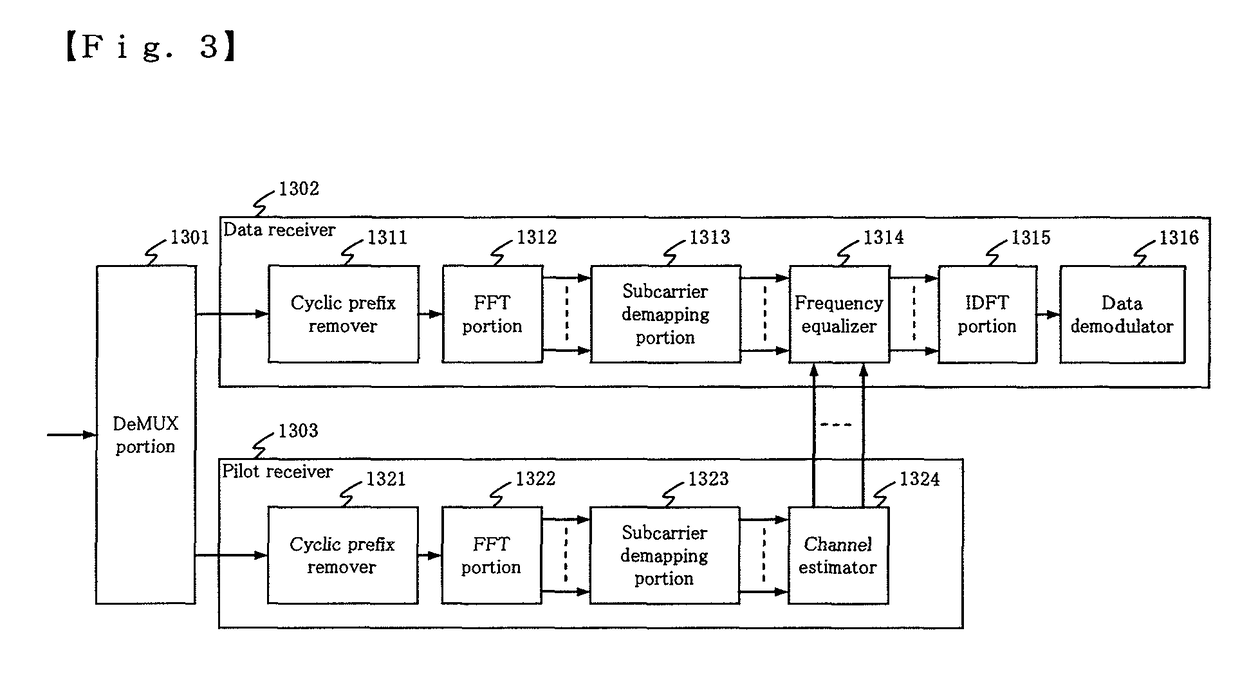Pilot signal transmission method and radio communication apparatus
a radio communication apparatus and pilot signal technology, applied in the field of radio communication systems, can solve the problems of not becoming orthogonal and the inability to suppress inter-cell interference, and achieve the effect of reducing inter-cell interference to pilot signals from another cell
- Summary
- Abstract
- Description
- Claims
- Application Information
AI Technical Summary
Benefits of technology
Problems solved by technology
Method used
Image
Examples
first embodiment
The First Embodiment Mode
[0081]FIG. 8 is a diagram showing the first embodiment mode of a mobile radio system in which a radio communication apparatus of the present invention is used.
[0082]As shown in FIG. 8, in this mode, in BS101 as a base station and a plurality of mobile stations MS102-105 for performing communications with BS101 in CL100 as a service area formed by BS101 are provided. Here, BS101 and MS102-105 are the radio communication apparatus of the present invention.
[0083]FIG. 9 is a diagram showing bands through which individual users transmit pilot signals and CAZAC sequences used thereupon in the mobile radio system shown in FIG. 8.
[0084]As shown in FIG. 9, the system band as the frequency band that is usable in the system is divided into frequency blocks B1 and B2. It is also assumed that every user uses a different band to transmit the data signal or control signal with a single carrier. In this case, all the users use identical CAZAC sequences having a sequence len...
second embodiment
The Second Embodiment
[0112]FIG. 14 is a diagram showing the second embodiment mode of a mobile radio system in which a radio communication apparatus of the present invention is used.
[0113]As shown in FIG. 14, in this mode, in BS101 and BS301 as base stations and a plurality of mobile stations MS102-105 and MS302-305 for performing communications with BS101 and BS301 respectively in CL100 and CL300 as service areas formed respectively by BS101 and BS301 are provided. Here, BS101, 301, MS102-105 and 302-305 are the radio communication apparatus of the present invention.
[0114]FIG. 15 is a diagram showing bands through which individual users transmit pilot signals and CAZAC sequences used thereupon in the mobile radio system shown in FIG. 14. Here, similarly to the conventional configuration, it is assumed that data signal or control signal is transmitted with a single carrier using frequency blocks having continuous frequencies.
[0115]In the first embodiment mode, the bands through whic...
PUM
 Login to View More
Login to View More Abstract
Description
Claims
Application Information
 Login to View More
Login to View More - R&D
- Intellectual Property
- Life Sciences
- Materials
- Tech Scout
- Unparalleled Data Quality
- Higher Quality Content
- 60% Fewer Hallucinations
Browse by: Latest US Patents, China's latest patents, Technical Efficacy Thesaurus, Application Domain, Technology Topic, Popular Technical Reports.
© 2025 PatSnap. All rights reserved.Legal|Privacy policy|Modern Slavery Act Transparency Statement|Sitemap|About US| Contact US: help@patsnap.com



